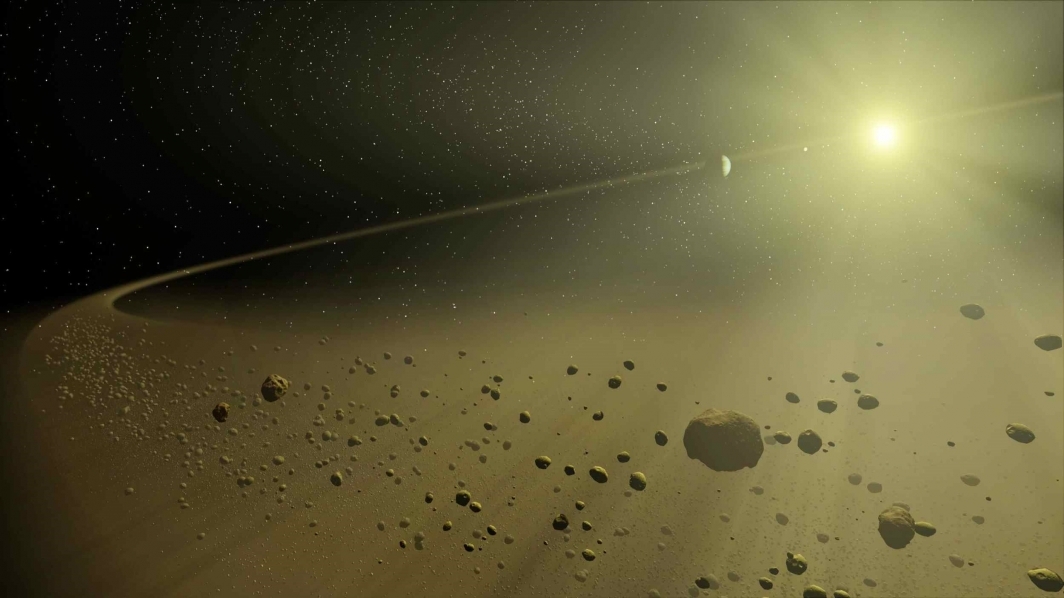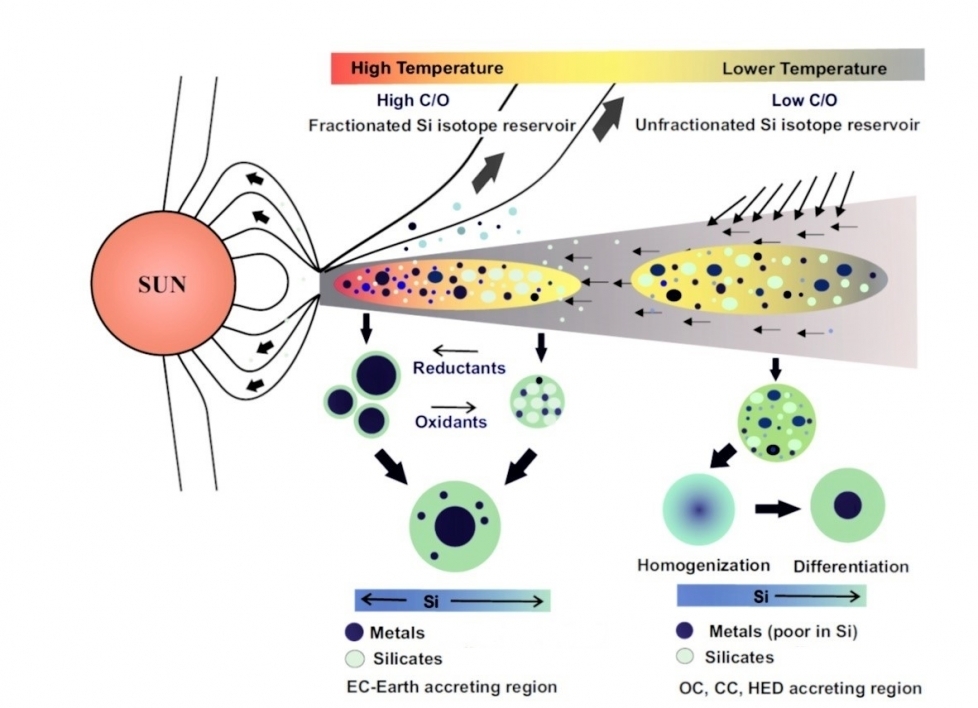Meteorites help determine how planets are formed
ASU researchers work with 'enstatite chondrite' to study what the Earth is made of

Researchers worked with a type of meteorite called an “enstatite chondrite” like this one to help determine what the Earth and other terrestrial planets may be made of. Photo by Rebekah Hines/ASU, courtesy of the ASU Center for Meteorite Studies.
What is the Earth made of? What kind of meteorites accreted together to form Earth? Do these meteorites exist like the ones on display at Arizona State University's Center for Meteorite Studies or were they entirely consumed during the formation of Earth?
These are long-standing questions that planetary scientists continue to study. And meteorites — our emissaries from the solar system — hold many of the clues.
In a recent study published in Nature Scientific Reports, ASU School of Earth and Space Exploration research scientist Vinai K Rai and co-author Jinia Sikdar are working with a type of meteorite called an “enstatite chondrite” to help determine what the Earth and other terrestrial planets may be made of.
Among all the chondrites, enstatite chondrites are the most similar to Earth in terms of their bulk chemical and isotopic compositions. The exception to this is their silicon isotope composition. Earth’s silicates, from the crust and mantle, are enriched in the heavier isotopes of silicon compared to enstatite chondrites.
In other words, the enstatite chondrites differ considerably in their silicon isotope composition in comparison to the Earth.
Because of this, researchers have typically ruled out enstatite chondrite meteorites as a major contributor to the Earth. In light of the overwhelming evidence of geochemical and isotopic similarities for other elements, the discrepancy of silicon, a major rock forming element, needed serious reinvestigation, according to the researchers.
In this study, the researchers compared the silicate part of enstatite chondrites to the silicate part of the Earth (for meteorite researchers this is like comparing apples to apples) and found a very similar isotopic composition.
To determine this, Rai and Sikdar performed mineral-specific silicon isotopic analyses of least altered enstatite chondrites using a multi-collector inductively coupled plasma mass spectrometer.
“We adapted a different approach to get the purest possible phases of the meteorite,” Rai explained. “Rather than using a hand magnet to separate the metal-rich and silicate-rich phases from the meteorites, we did micro-milling of pre-characterized thick sections of meteorites.”
From these analyses, the researchers found that there was a very similar isotopic composition between silicates in enstatite chondrite meteorites and silicates on Earth. Metals in enstatite chondrites, on the other hand, have a much lighter silicon isotope composition. It is postulated that the observed isotopic composition of silicates in enstatite chondrites is predominantly of nebular origin.
“Our results suggest that an Earth-forming embryo was formed from the accretion of enstatite chondrite-like material that already had a metal core before accreting to form Earth,” Rai said.
The next steps for Rai and Sikdar are to look for the iron core from a reduced planetary body, if it exists and is in our meteorite collections, which would be predicted to have a light silicon isotope composition similar to that of enstatite chondrite metal. This could further help in understanding the origin and subsequent evolution of the Earth.
“What the Earth and other terrestrial planets are made up of is a fundamental question for all of us,” Rai said.
More Science and technology

ASU planetary scientist to be inducted into the National Academy of Sciences
The National Academy of Sciences is inducting School of Earth and Space Exploration Director Meenakshi Wadhwa into the 2023 class…

Unlocking the potential of AI for homeland security
“Can we do what we're doing now cheaper, more efficiently, more effectively?” Adam Cox, director in the Office of Strategy and…

SpaceHACK highlights student solutions to environmental challenges, digital divide
By Adrianna Nine About 250 students from around the world convened online and at Arizona State University on March 22 for the…

